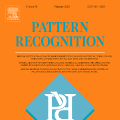The most frequent kind of dementia of the nervous system, Alzheimer's disease, weakens several brain processes (such as memory) and eventually results in death. The clinical study uses magnetic resonance imaging to diagnose AD. Deep learning algorithms are capable of pattern recognition and feature extraction from the inputted raw data. As early diagnosis and stage detection are the most crucial elements in enhancing patient care and treatment outcomes, deep learning algorithms for MRI images have recently allowed for diagnosing a medical condition at the beginning stage and identifying particular symptoms of Alzheimer's disease. As a result, we aimed to analyze five specific studies focused on AD diagnosis using MRI-based deep learning algorithms between 2021 and 2023 in this study. To completely illustrate the differences between these techniques and comprehend how deep learning algorithms function, we attempted to explore selected approaches in depth.
相關內容
Hopfield attractor networks are robust distributed models of human memory, but lack a general mechanism for effecting state-dependent attractor transitions in response to input. We propose construction rules such that an attractor network may implement an arbitrary finite state machine (FSM), where states and stimuli are represented by high-dimensional random vectors, and all state transitions are enacted by the attractor network's dynamics. Numerical simulations show the capacity of the model, in terms of the maximum size of implementable FSM, to be linear in the size of the attractor network for dense bipolar state vectors, and approximately quadratic for sparse binary state vectors. We show that the model is robust to imprecise and noisy weights, and so a prime candidate for implementation with high-density but unreliable devices. By endowing attractor networks with the ability to emulate arbitrary FSMs, we propose a plausible path by which FSMs could exist as a distributed computational primitive in biological neural networks.
The alignment of autonomous agents with human values is a pivotal challenge when deploying these agents within physical environments, where safety is an important concern. However, defining the agent's objective as a reward and/or cost function is inherently complex and prone to human errors. In response to this challenge, we present a novel approach that leverages one-class decision trees to facilitate learning from expert demonstrations. These decision trees provide a foundation for representing a set of constraints pertinent to the given environment as a logical formula in disjunctive normal form. The learned constraints are subsequently employed within an oracle constrained reinforcement learning framework, enabling the acquisition of a safe policy. In contrast to other methods, our approach offers an interpretable representation of the constraints, a vital feature in safety-critical environments. To validate the effectiveness of our proposed method, we conduct experiments in synthetic benchmark domains and a realistic driving environment.
Optimizing static risk-averse objectives in Markov decision processes is difficult because they do not admit standard dynamic programming equations common in Reinforcement Learning (RL) algorithms. Dynamic programming decompositions that augment the state space with discrete risk levels have recently gained popularity in the RL community. Prior work has shown that these decompositions are optimal when the risk level is discretized sufficiently. However, we show that these popular decompositions for Conditional-Value-at-Risk (CVaR) and Entropic-Value-at-Risk (EVaR) are inherently suboptimal regardless of the discretization level. In particular, we show that a saddle point property assumed to hold in prior literature may be violated. However, a decomposition does hold for Value-at-Risk and our proof demonstrates how this risk measure differs from CVaR and EVaR. Our findings are significant because risk-averse algorithms are used in high-stake environments, making their correctness much more critical.
Research on adversarial robustness is primarily focused on image and text data. Yet, many scenarios in which lack of robustness can result in serious risks, such as fraud detection, medical diagnosis, or recommender systems often do not rely on images or text but instead on tabular data. Adversarial robustness in tabular data poses two serious challenges. First, tabular datasets often contain categorical features, and therefore cannot be tackled directly with existing optimization procedures. Second, in the tabular domain, algorithms that are not based on deep networks are widely used and offer great performance, but algorithms to enhance robustness are tailored to neural networks (e.g. adversarial training). In this paper, we tackle both challenges. We present a method that allows us to train adversarially robust deep networks for tabular data and to transfer this robustness to other classifiers via universal robust embeddings tailored to categorical data. These embeddings, created using a bilevel alternating minimization framework, can be transferred to boosted trees or random forests making them robust without the need for adversarial training while preserving their high accuracy on tabular data. We show that our methods outperform existing techniques within a practical threat model suitable for tabular data.
The field of computational pathology has witnessed remarkable progress in the development of both task-specific predictive models and task-agnostic self-supervised vision encoders. However, despite the explosive growth of generative artificial intelligence (AI), there has been limited study on building general purpose, multimodal AI assistants tailored to pathology. Here we present PathChat, a vision-language generalist AI assistant for human pathology using an in-house developed foundational vision encoder pretrained on 100 million histology images from over 100,000 patient cases and 1.18 million pathology image-caption pairs. The vision encoder is then combined with a pretrained large language model and the whole system is finetuned on over 250,000 diverse disease agnostic visual language instructions. We compare PathChat against several multimodal vision language AI assistants as well as GPT4V, which powers the commercially available multimodal general purpose AI assistant ChatGPT-4. When relevant clinical context is provided with the histology image, PathChat achieved a diagnostic accuracy of 87% on multiple-choice questions based on publicly available cases of diverse tissue origins and disease models. Additionally, using open-ended questions and human expert evaluation, we found that overall PathChat produced more accurate and pathologist-preferable responses to diverse queries related to pathology. As an interactive and general vision language AI assistant that can flexibly handle both visual and natural language inputs, PathChat can potentially find impactful applications in pathology education, research, and human-in-the-loop clinical decision making.
Human intelligence thrives on the concept of cognitive synergy, where collaboration and information integration among different cognitive processes yield superior outcomes compared to individual cognitive processes in isolation. Although Large Language Models (LLMs) have demonstrated promising performance as general task-solving agents, they still struggle with tasks that require intensive domain knowledge and complex reasoning. In this work, we propose Solo Performance Prompting (SPP), which transforms a single LLM into a cognitive synergist by engaging in multi-turn self-collaboration with multiple personas. A cognitive synergist refers to an intelligent agent that collaborates with multiple minds, combining their individual strengths and knowledge, to enhance problem-solving and overall performance in complex tasks. By dynamically identifying and simulating different personas based on task inputs, SPP unleashes the potential of cognitive synergy in LLMs. We have discovered that assigning multiple, fine-grained personas in LLMs elicits better problem-solving abilities compared to using a single or fixed number of personas. We evaluate SPP on three challenging tasks: Trivia Creative Writing, Codenames Collaborative, and Logic Grid Puzzle, encompassing both knowledge-intensive and reasoning-intensive types. Unlike previous works, such as Chain-of-Thought, that solely enhance the reasoning abilities in LLMs, SPP effectively elicits internal knowledge acquisition abilities, reduces hallucination, and maintains strong reasoning capabilities. Code, data, and prompts can be found at: //github.com/MikeWangWZHL/Solo-Performance-Prompting.git.
Recent artificial intelligence (AI) systems have reached milestones in "grand challenges" ranging from Go to protein-folding. The capability to retrieve medical knowledge, reason over it, and answer medical questions comparably to physicians has long been viewed as one such grand challenge. Large language models (LLMs) have catalyzed significant progress in medical question answering; Med-PaLM was the first model to exceed a "passing" score in US Medical Licensing Examination (USMLE) style questions with a score of 67.2% on the MedQA dataset. However, this and other prior work suggested significant room for improvement, especially when models' answers were compared to clinicians' answers. Here we present Med-PaLM 2, which bridges these gaps by leveraging a combination of base LLM improvements (PaLM 2), medical domain finetuning, and prompting strategies including a novel ensemble refinement approach. Med-PaLM 2 scored up to 86.5% on the MedQA dataset, improving upon Med-PaLM by over 19% and setting a new state-of-the-art. We also observed performance approaching or exceeding state-of-the-art across MedMCQA, PubMedQA, and MMLU clinical topics datasets. We performed detailed human evaluations on long-form questions along multiple axes relevant to clinical applications. In pairwise comparative ranking of 1066 consumer medical questions, physicians preferred Med-PaLM 2 answers to those produced by physicians on eight of nine axes pertaining to clinical utility (p < 0.001). We also observed significant improvements compared to Med-PaLM on every evaluation axis (p < 0.001) on newly introduced datasets of 240 long-form "adversarial" questions to probe LLM limitations. While further studies are necessary to validate the efficacy of these models in real-world settings, these results highlight rapid progress towards physician-level performance in medical question answering.
Few-shot Knowledge Graph (KG) completion is a focus of current research, where each task aims at querying unseen facts of a relation given its few-shot reference entity pairs. Recent attempts solve this problem by learning static representations of entities and references, ignoring their dynamic properties, i.e., entities may exhibit diverse roles within task relations, and references may make different contributions to queries. This work proposes an adaptive attentional network for few-shot KG completion by learning adaptive entity and reference representations. Specifically, entities are modeled by an adaptive neighbor encoder to discern their task-oriented roles, while references are modeled by an adaptive query-aware aggregator to differentiate their contributions. Through the attention mechanism, both entities and references can capture their fine-grained semantic meanings, and thus render more expressive representations. This will be more predictive for knowledge acquisition in the few-shot scenario. Evaluation in link prediction on two public datasets shows that our approach achieves new state-of-the-art results with different few-shot sizes.
Weakly supervised phrase grounding aims at learning region-phrase correspondences using only image-sentence pairs. A major challenge thus lies in the missing links between image regions and sentence phrases during training. To address this challenge, we leverage a generic object detector at training time, and propose a contrastive learning framework that accounts for both region-phrase and image-sentence matching. Our core innovation is the learning of a region-phrase score function, based on which an image-sentence score function is further constructed. Importantly, our region-phrase score function is learned by distilling from soft matching scores between the detected object class names and candidate phrases within an image-sentence pair, while the image-sentence score function is supervised by ground-truth image-sentence pairs. The design of such score functions removes the need of object detection at test time, thereby significantly reducing the inference cost. Without bells and whistles, our approach achieves state-of-the-art results on the task of visual phrase grounding, surpassing previous methods that require expensive object detectors at test time.
Multi-relation Question Answering is a challenging task, due to the requirement of elaborated analysis on questions and reasoning over multiple fact triples in knowledge base. In this paper, we present a novel model called Interpretable Reasoning Network that employs an interpretable, hop-by-hop reasoning process for question answering. The model dynamically decides which part of an input question should be analyzed at each hop; predicts a relation that corresponds to the current parsed results; utilizes the predicted relation to update the question representation and the state of the reasoning process; and then drives the next-hop reasoning. Experiments show that our model yields state-of-the-art results on two datasets. More interestingly, the model can offer traceable and observable intermediate predictions for reasoning analysis and failure diagnosis, thereby allowing manual manipulation in predicting the final answer.




